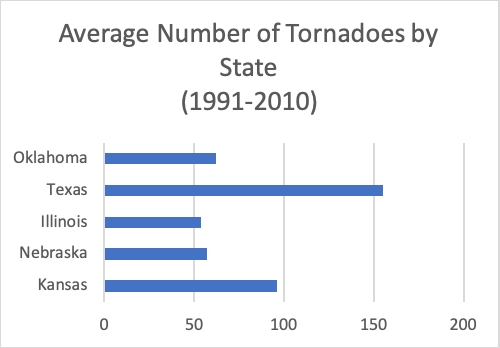TABE Reading Practice Test 2
Cities across the world are essentially blends of smaller cultural environments that lead people to have vastly different experiences. Each city typically contains a broad spectrum of dining establishments along with various art institutions like museums and theatres. Yet with all these blends of dining, art and night lives, what is the one characteristic that can distinguish a city? History. The undeniably unique history of each city provides rich traditions and a bond between the local people that overshadows any other city’s mélange of dining and art institutions. In context, which word most closely defines mélange?
The author selects words such as “spectrum” and “various” to refer to the dining and art institutions. Clearly mélange must be some sort of variety offering. Only choice C, “assortment” matches this definition.
Cities across the world are essentially blends of smaller cultural environments that lead people to have vastly different experiences. Each city typically contains a broad spectrum of dining establishments along with various art institutions like museums and theatres. Yet with all these blends of dining, art and night lives, what is the one characteristic that can distinguish a city? History. The undeniably unique history of each city provides rich traditions and a bond between the local people that overshadows any other city’s mélange of dining and art institutions. Which of the following would the author believe is the most important city attraction or characteristic?
The author clearly believes true, genuine history to be the paramount characteristic. Choice A and choice B (restaurant and museum) are exactly what the author said weren’t as important as history (choice B is tricky, but it is still just a museum—not natural history in its element). Choice D refers to sports, despite the fact that Wrigley Field has much history tied to it; choice E is irrelevant as government is not nearly as important to a city’s cultural wealth as a historical monument. Choice C is a historical object and symbol; furthermore, the author refers to the local people that add to the cultural vibrancy. Choice C is the best option.
Passage 1 Because it is filled with contradictions, performance is also filled with risk. This is the domain of stage fright. The actor is aware that appearing in front of an audience is a Line scary proposition. Maintaining the reality of the character is, 5 in itself, a fragile affair; it demands of the actor a series of complex transformations. The actor has the unique problem of hiding and showing at the same time. The actor’s conscious fear is not about making a mistake, but about allowing the audience to see something that it is not supposed to see: 10 namely, the performer’s fear, or stage fright. Passage 2 The term “stage fright” has largely dropped out of use, because we know now that dwelling on something this malevolent gives it power. If I tell you not to be afraid, you may dwell on your fear. If I say, do not think of 15 fast-food burgers under any circumstances, a line of them will parade through your mind. The key to most fears is substitution. On the simplest level, you replace the ogre with something less menacing to fill your consciousness. If you will imagine yourself to be a 20 host rather than an actor, and think more about the comfort of your listeners than their verdicts, everything will fall into place. What is the best way to describe the purposes of the two passages?
Passage 1 discusses stage fright by focusing on the vulnerability of the actor, explaining why “appearing in front of an audience is a scary proposition” (lines 3-4). So Passage 1 can be said to analyze a phenomenon. Passage 2 similarly addresses the experience of stage fright, but discusses ways of coping with it. So Passage 2 can be said to suggest a solution to a problem.
Passage 1 Because it is filled with contradictions, performance is also filled with risk. This is the domain of stage fright. The actor is aware that appearing in front of an audience is a Line scary proposition. Maintaining the reality of the character is, 5 in itself, a fragile affair; it demands of the actor a series of complex transformations. The actor has the unique problem of hiding and showing at the same time. The actor’s conscious fear is not about making a mistake, but about allowing the audience to see something that it is not supposed to see: 10 namely, the performer’s fear, or stage fright. Passage 2 The term “stage fright” has largely dropped out of use, because we know now that dwelling on something this malevolent gives it power. If I tell you not to be afraid, you may dwell on your fear. If I say, do not think of 15 fast-food burgers under any circumstances, a line of them will parade through your mind. The key to most fears is substitution. On the simplest level, you replace the ogre with something less menacing to fill your consciousness. If you will imagine yourself to be a 20 host rather than an actor, and think more about the comfort of your listeners than their verdicts, everything will fall into place. In the context of Passage 1, the phrase "Maintaining the reality of the character" (line 4) most directly refers to
Passage 1 suggests that “maintaining the reality of the character” involves the “unique problem of hiding and showing at the same time” (lines 4-7). The text further suggests that the actor must not allow “the audience to see something it is not supposed to see: namely, the performer's fear, or stage fright” (lines 9-11). This suggests that the actor must hide things that do not relate to the character and, by extension, show the audience only behavior relevant to the character.
Passage 1 Because it is filled with contradictions, performance is also filled with risk. This is the domain of stage fright. The actor is aware that appearing in front of an audience is a Line scary proposition. Maintaining the reality of the character is, 5 in itself, a fragile affair; it demands of the actor a series of complex transformations. The actor has the unique problem of hiding and showing at the same time. The actor’s conscious fear is not about making a mistake, but about allowing the audience to see something that it is not supposed to see: 10 namely, the performer’s fear, or stage fright. Passage 2 The term “stage fright” has largely dropped out of use, because we know now that dwelling on something this malevolent gives it power. If I tell you not to be afraid, you may dwell on your fear. If I say, do not think of 15 fast-food burgers under any circumstances, a line of them will parade through your mind. The key to most fears is substitution. On the simplest level, you replace the ogre with something less menacing to fill your consciousness. If you will imagine yourself to be a 20 host rather than an actor, and think more about the comfort of your listeners than their verdicts, everything will fall into place. How do the passages view stage fright in relation to human behavior in general?
Passage 1 specifically suggests that “performance” is the “domain of stage fright” (lines 1-2). Passage 1 emphasizes that situations unique to the theater contribute to stage fright. Passage 2 states that “the key to most fears is substitution” (lines 17-18), and shows how actors can use substitution to overcome stage fright. Passage 2 thus sees stage fright as “similar in one way to most other fears.”
Passage 1 Because it is filled with contradictions, performance is also filled with risk. This is the domain of stage fright. The actor is aware that appearing in front of an audience is a Line scary proposition. Maintaining the reality of the character is, 5 in itself, a fragile affair; it demands of the actor a series of complex transformations. The actor has the unique problem of hiding and showing at the same time. The actor’s conscious fear is not about making a mistake, but about allowing the audience to see something that it is not supposed to see: 10 namely, the performer’s fear, or stage fright. Passage 2 The term “stage fright” has largely dropped out of use, because we know now that dwelling on something this malevolent gives it power. If I tell you not to be afraid, you may dwell on your fear. If I say, do not think of 15 fast-food burgers under any circumstances, a line of them will parade through your mind. The key to most fears is substitution. On the simplest level, you replace the ogre with something less menacing to fill your consciousness. If you will imagine yourself to be a 20 host rather than an actor, and think more about the comfort of your listeners than their verdicts, everything will fall into place. Which of the following describes an actor coping with stage fright by following the advice of the author of Passage 2?
The author gives the following advice to actors: “If you will . . . think more about the comfort of your listeners than their verdicts, everything will fall into place” (lines 20-23). A performer who thinks of the audience as friends would be following this advice.
Tornado Alert (1) Since there are more tornadoes in the United States than in any other nation in the world, it is crucial for Americans, especially those who live in high-risk areas, to be able to recognize the warning signs. Anyone in the path of a tornado runs the risk of death and great property destruction. Many lives will be saved if people are better able to predict when a tornado would make landfall. (2) It's crucial to first comprehend how and why tornadoes originate. A tornado is caused by particular weather patterns. In general, a tornado arises when the air temperature is unstable, which is frequently brought on by warm, humid conditions close to the ground and cooler conditions higher in the atmosphere. Wind conditions have a big role in tornadoes. For a tornado to form, there must be significant wind shear, or variations in the direction of the wind. Once it starts, a tornado won't stay on the ground for more than 20 minutes, but even in that short amount of time, it may cause a lot of damage. (3) So, how can people get ready for a possible tornado? It all comes down to recognizing the warning signs. People can keep an eye out for any obvious and rapid changes in the sky and clouds. For instance, the onset of a greenish hue in the sky could indicate the approach of a tornado. Similar to the appearance of a "wall" of clouds, an incoming cloud of debris may indicate the formation of a tornado. Sometimes hail will start to fall in place of the debris. In addition, a lot of people have talked about how there is a strange hush and stillness before a tornado. This is a perfect illustration of the cliché "calm before the storm." (4) Knowing the tornado warning signals, especially if you live in a location where they frequently occur, can give you the crucial time you need to find safety from the devastation. Because they are so challenging to forecast, tornadoes continue to confound meteorologists. Even though meteorologists have become very adept at spotting potential tornado risks, you won't have much time to prepare if a tornado is headed your way. It's best to be able to recognize the warning signs on your own and to be as ready as you can be in case/when a tornado strikes close to your home. Which of these might be a tornado warning sign, based on the passage?

Explanation:
Choice (A) is the right response. It is the only response that the verse explicitly states. Although precipitation is mentioned in the passage, it only refers to hail (B). Although both lightning and loud, thundering noises have been associated with tornadoes (C and D, respectively), the passage makes no mention of either.
Tornado Alert (1) Since there are more tornadoes in the United States than in any other nation in the world, it is crucial for Americans, especially those who live in high-risk areas, to be able to recognize the warning signs. Anyone in the path of a tornado runs the risk of death and great property destruction. Many lives will be saved if people are better able to predict when a tornado would make landfall. (2) It's crucial to first comprehend how and why tornadoes originate. A tornado is caused by particular weather patterns. In general, a tornado arises when the air temperature is unstable, which is frequently brought on by warm, humid conditions close to the ground and cooler conditions higher in the atmosphere. Wind conditions have a big role in tornadoes. For a tornado to form, there must be significant wind shear, or variations in the direction of the wind. Once it starts, a tornado won't stay on the ground for more than 20 minutes, but even in that short amount of time, it may cause a lot of damage. (3) So, how can people get ready for a possible tornado? It all comes down to recognizing the warning signs. People can keep an eye out for any obvious and rapid changes in the sky and clouds. For instance, the onset of a greenish hue in the sky could indicate the approach of a tornado. Similar to the appearance of a "wall" of clouds, an incoming cloud of debris may indicate the formation of a tornado. Sometimes hail will start to fall in place of the debris. In addition, a lot of people have talked about how there is a strange hush and stillness before a tornado. This is a perfect illustration of the cliché "calm before the storm." (4) Knowing the tornado warning signals, especially if you live in a location where they frequently occur, can give you the crucial time you need to find safety from the devastation. Because they are so challenging to forecast, tornadoes continue to confound meteorologists. Even though meteorologists have become very adept at spotting potential tornado risks, you won't have much time to prepare if a tornado is headed your way. It's best to be able to recognize the warning signs on your own and to be as ready as you can be in case/when a tornado strikes close to your home. What is the article's main idea?
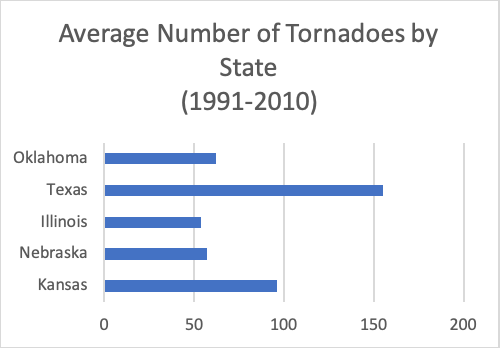
Explanation:
The response you choose is the right one (C). The passage makes reference of all the other solutions, but only (C) is the primary focus.
Tornado Alert (1) Since there are more tornadoes in the United States than in any other nation in the world, it is crucial for Americans, especially those who live in high-risk areas, to be able to recognize the warning signs. Anyone in the path of a tornado runs the risk of death and great property destruction. Many lives will be saved if people are better able to predict when a tornado would make landfall. (2) It's crucial to first comprehend how and why tornadoes originate. A tornado is caused by particular weather patterns. In general, a tornado arises when the air temperature is unstable, which is frequently brought on by warm, humid conditions close to the ground and cooler conditions higher in the atmosphere. Wind conditions have a big role in tornadoes. For a tornado to form, there must be significant wind shear, or variations in the direction of the wind. Once it starts, a tornado won't stay on the ground for more than 20 minutes, but even in that short amount of time, it may cause a lot of damage. (3) So, how can people get ready for a possible tornado? It all comes down to recognizing the warning signs. People can keep an eye out for any obvious and rapid changes in the sky and clouds. For instance, the onset of a greenish hue in the sky could indicate the approach of a tornado. Similar to the appearance of a "wall" of clouds, an incoming cloud of debris may indicate the formation of a tornado. Sometimes hail will start to fall in place of the debris. In addition, a lot of people have talked about how there is a strange hush and stillness before a tornado. This is a perfect illustration of the cliché "calm before the storm." (4) Knowing the tornado warning signals, especially if you live in a location where they frequently occur, can give you the crucial time you need to find safety from the devastation. Because they are so challenging to forecast, tornadoes continue to confound meteorologists. Even though meteorologists have become very adept at spotting potential tornado risks, you won't have much time to prepare if a tornado is headed your way. It's best to be able to recognize the warning signs on your own and to be as ready as you can be in case/when a tornado strikes close to your home. Read the following passage from the article. For instance, the onset of a greenish hue in the sky could indicate the approach of a tornado. Which of the following phrases would you use instead of approaching in this context?
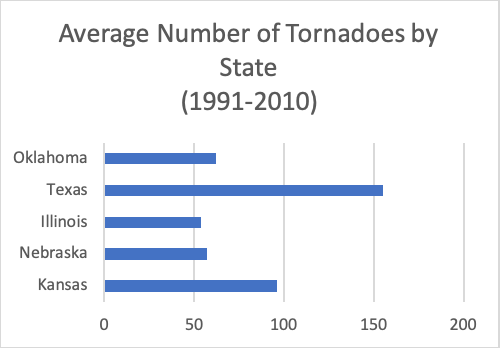
Explanation:
The correct answer is answer choice (A). This sentence follows a topic sentence describing ways for people to know that a tornado is on its way. Therefore, “going past” (C) does not exactly work. The tornado might be “causing destruction” (D), but that is not described by the word “approaching.” Answer choice (B) is tempting, but the passage is mainly about figuring out how to avoid a tornado, so answer choice (B) wouldn’t really make sense.
"Tornado Alert (1) Since there are more tornadoes in the United States than in any other nation in the world, it is crucial for Americans, especially those who live in high-risk areas, to be able to recognize the warning signs. Anyone in the path of a tornado runs the risk of death and great property destruction. Many lives will be saved if people are better able to predict when a tornado would make landfall. (2) It's crucial to first comprehend how and why tornadoes originate. A tornado is caused by particular weather patterns. In general, a tornado arises when the air temperature is unstable, which is frequently brought on by warm, humid conditions close to the ground and cooler conditions higher in the atmosphere. Wind conditions have a big role in tornadoes. For a tornado to form, there must be significant wind shear, or variations in the direction of the wind. Once it starts, a tornado won't stay on the ground for more than 20 minutes, but even in that short amount of time, it may cause a lot of damage. (3) So, how can people get ready for a possible tornado? It all comes down to recognizing the warning signs. People can keep an eye out for any obvious and rapid changes in the sky and clouds. For instance, the onset of a greenish hue in the sky could indicate the approach of a tornado. Similar to the appearance of a "wall" of clouds, an incoming cloud of debris may indicate the formation of a tornado. Sometimes hail will start to fall in place of the debris. In addition, a lot of people have talked about how there is a strange hush and stillness before a tornado. This is a perfect illustration of the cliché "calm before the storm." (4) Knowing the tornado warning signals, especially if you live in a location where they frequently occur, can give you the crucial time you need to find safety from the devastation. Because they are so challenging to forecast, tornadoes continue to confound meteorologists. Even though meteorologists have become very adept at spotting potential tornado risks, you won't have much time to prepare if a tornado is headed your way. It's best to be able to recognize the warning signs on your own and to be as ready as you can be in case/when a tornado strikes close to your home. What two factors appear to be crucial in the development of tornadoes, based on the passage?"
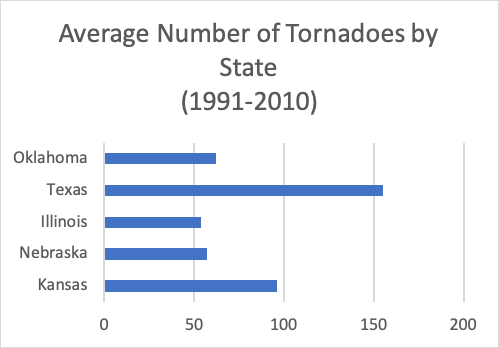
Explanation:
The response you choose is the right one (B). The chapter only specifically mentions wind shear and air instability, while other factors may also play a role in the development of tornadoes.
Tornado Alert (1) Since there are more tornadoes in the United States than in any other nation in the world, it is crucial for Americans, especially those who live in high-risk areas, to be able to recognize the warning signs. Anyone in the path of a tornado runs the risk of death and great property destruction. Many lives will be saved if people are better able to predict when a tornado would make landfall. (2) It's crucial to first comprehend how and why tornadoes originate. A tornado is caused by particular weather patterns. In general, a tornado arises when the air temperature is unstable, which is frequently brought on by warm, humid conditions close to the ground and cooler conditions higher in the atmosphere. Wind conditions have a big role in tornadoes. For a tornado to form, there must be significant wind shear, or variations in the direction of the wind. Once it starts, a tornado won't stay on the ground for more than 20 minutes, but even in that short amount of time, it may cause a lot of damage. (3) So, how can people get ready for a possible tornado? It all comes down to recognizing the warning signs. People can keep an eye out for any obvious and rapid changes in the sky and clouds. For instance, the onset of a greenish hue in the sky could indicate the approach of a tornado. Similar to the appearance of a "wall" of clouds, an incoming cloud of debris may indicate the formation of a tornado. Sometimes hail will start to fall in place of the debris. In addition, a lot of people have talked about how there is a strange hush and stillness before a tornado. This is a perfect illustration of the cliché "calm before the storm." (4) Knowing the tornado warning signals, especially if you live in a location where they frequently occur, can give you the crucial time you need to find safety from the devastation. Because they are so challenging to forecast, tornadoes continue to confound meteorologists. Even though meteorologists have become very adept at spotting potential tornado risks, you won't have much time to prepare if a tornado is headed your way. It's best to be able to recognize the warning signs on your own and to be as ready as you can be in case/when a tornado strikes close to your home. Why do tornadoes still confound meteorologists, according to the passage?
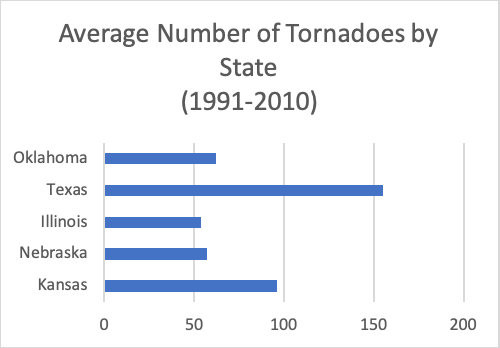
Explanation:
Choice (C) is the right response. The line "Tornadoes still puzzle meteorologists because they are so difficult to anticipate" plainly states the solution. The passage directly contradicts each and every one of the other response options.
"Tornado Alert (1) Since there are more tornadoes in the United States than in any other nation in the world, it is crucial for Americans, especially those who live in high-risk areas, to be able to recognize the warning signs. Anyone in the path of a tornado runs the risk of death and great property destruction. Many lives will be saved if people are better able to predict when a tornado would make landfall. (2) It's crucial to first comprehend how and why tornadoes originate. A tornado is caused by particular weather patterns. In general, a tornado arises when the air temperature is unstable, which is frequently brought on by warm, humid conditions close to the ground and cooler conditions higher in the atmosphere. Wind conditions have a big role in tornadoes. For a tornado to form, there must be significant wind shear, or variations in the direction of the wind. Once it starts, a tornado won't stay on the ground for more than 20 minutes, but even in that short amount of time, it may cause a lot of damage. (3) So, how can people get ready for a possible tornado? It all comes down to recognizing the warning signs. People can keep an eye out for any obvious and rapid changes in the sky and clouds. For instance, the onset of a greenish hue in the sky could indicate the approach of a tornado. Similar to the appearance of a "wall" of clouds, an incoming cloud of debris may indicate the formation of a tornado. Sometimes hail will start to fall in place of the debris. In addition, a lot of people have talked about how there is a strange hush and stillness before a tornado. This is a perfect illustration of the cliché "calm before the storm." (4) Knowing the tornado warning signals, especially if you live in a location where they frequently occur, can give you the crucial time you need to find safety from the devastation. Because they are so challenging to forecast, tornadoes continue to confound meteorologists. Even though meteorologists have become very adept at spotting potential tornado risks, you won't have much time to prepare if a tornado is headed your way. It's best to be able to recognize the warning signs on your own and to be as ready as you can be in case/when a tornado strikes close to your home. According to the paragraph, which of the following answers is the best estimate of how long tornadoes remain after making contact with the ground?"
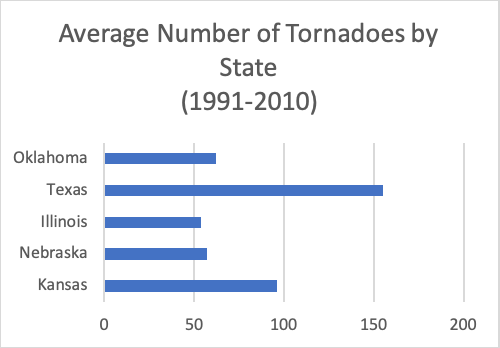
Explanation:
Choice (D) is the right response. The statement "Once a tornado forms, it will only touch the earth for around 20 minutes, yet a tornado may wreak a lot of damage even in only a few minutes" explicitly answers this question. Response choice (D) is a better alternative because there is no evidence that tornadoes are generally on the ground for such a brief period of time. A tornado may just last 1-2 minutes (A), but this is not the most correct answer.
Tornado Alert (1) Since there are more tornadoes in the United States than in any other nation in the world, it is crucial for Americans, especially those who live in high-risk areas, to be able to recognize the warning signs. Anyone in the path of a tornado runs the risk of death and great property destruction. Many lives will be saved if people are better able to predict when a tornado would make landfall. (2) It's crucial to first comprehend how and why tornadoes originate. A tornado is caused by particular weather patterns. In general, a tornado arises when the air temperature is unstable, which is frequently brought on by warm, humid conditions close to the ground and cooler conditions higher in the atmosphere. Wind conditions have a big role in tornadoes. For a tornado to form, there must be significant wind shear, or variations in the direction of the wind. Once it starts, a tornado won't stay on the ground for more than 20 minutes, but even in that short amount of time, it may cause a lot of damage. (3) So, how can people get ready for a possible tornado? It all comes down to recognizing the warning signs. People can keep an eye out for any obvious and rapid changes in the sky and clouds. For instance, the onset of a greenish hue in the sky could indicate the approach of a tornado. Similar to the appearance of a "wall" of clouds, an incoming cloud of debris may indicate the formation of a tornado. Sometimes hail will start to fall in place of the debris. In addition, a lot of people have talked about how there is a strange hush and stillness before a tornado. This is a perfect illustration of the cliché "calm before the storm." (4) Knowing the tornado warning signals, especially if you live in a location where they frequently occur, can give you the crucial time you need to find safety from the devastation. Because they are so challenging to forecast, tornadoes continue to confound meteorologists. Even though meteorologists have become very adept at spotting potential tornado risks, you won't have much time to prepare if a tornado is headed your way. It's best to be able to recognize the warning signs on your own and to be as ready as you can be in case/when a tornado strikes close to your home. Which state has averaged the most tornadoes, according to the bar graph?
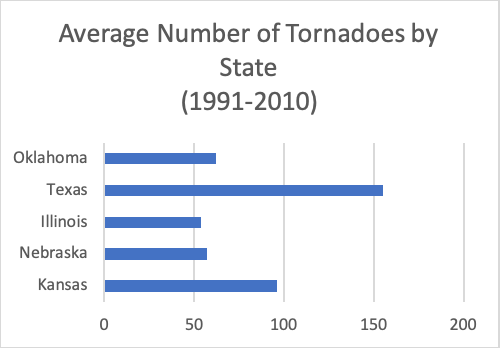
Explanation:
Choice (B) is the correct response. Looking at the chart, you can see that Texas has a bar that is little over 150 points longer than those of the other states.
Which word has a vowel with a short e sound?
Explanation:
Choice (D) is the correct response. A short vowel does not sound like its letter when it is spoken. Therefore, an e that doesn't pronounce "ee" would be considered short. The only word in the list of possible answers without a "ee" sound is "peg" (D).
What word has the vowel "u" pronounced long?
Explanation:
Choice (A) is the correct response. A long vowel sounds like its letter when spoken. So a long u would sound like a yoo. "Mule" is the only word having a yoo sound among the response options (A).
